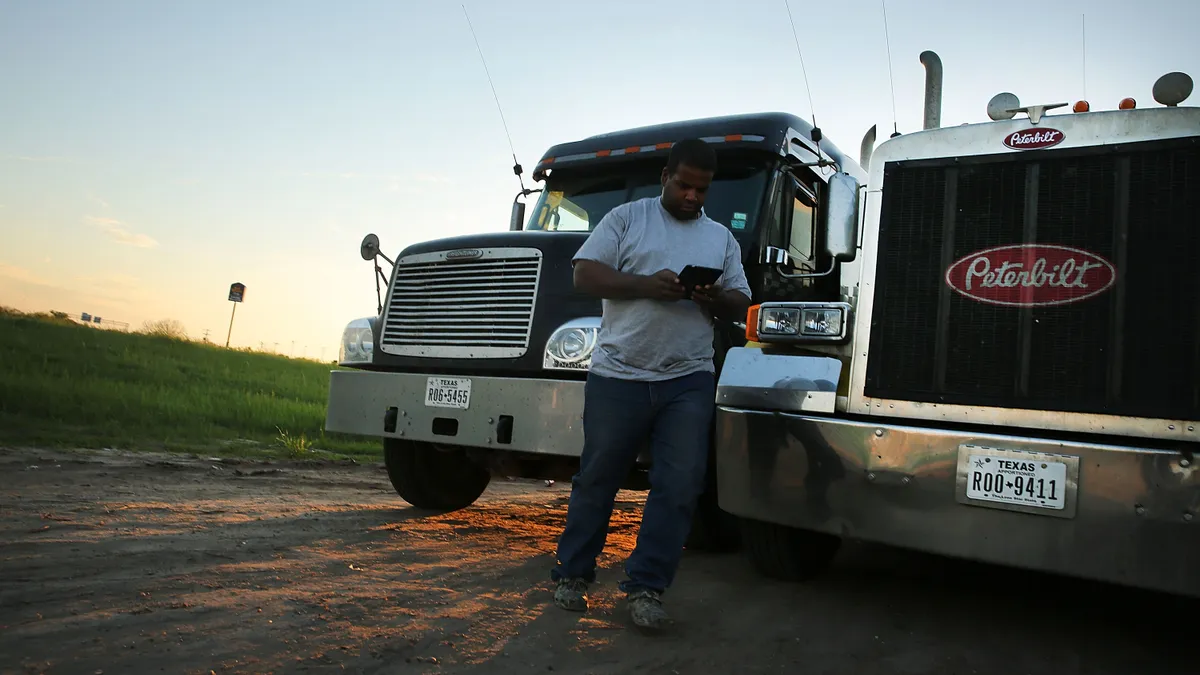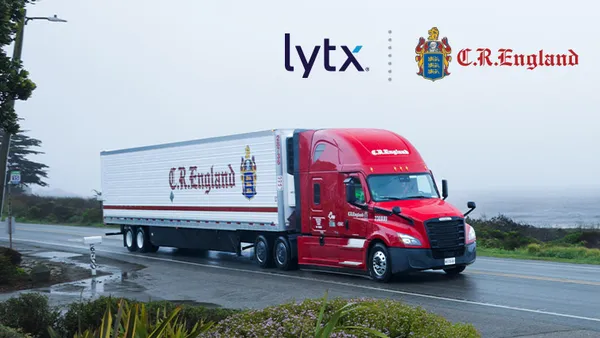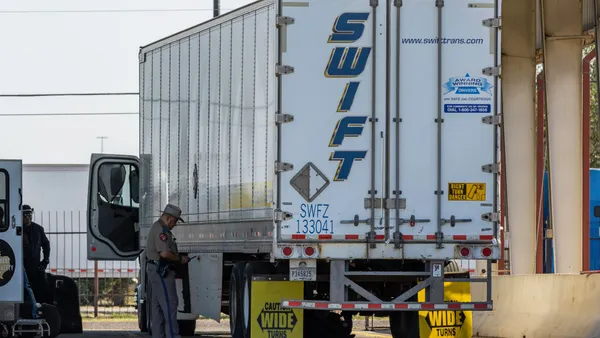NASHVILLE — The driver shortage ranks as the trucking industry's No. 1 issue for the fifth year in a row, according to the American Transportation Research Institute's "Critical Issues in the Trucking Industry" 2021 report.
The study was released Sunday during an event at the American Trucking Associations' Management Conference & Exhibition.
Top issues in trucking
| Issue | 2021 rank | 2020 rank |
|---|---|---|
| Driver shortage | 1 | 1 |
| Driver retention | 2 | 6 |
| Driver compensation | 3 | 2 |
| Lawsuit-abuse reform | 4 | 7 (Listed as "tort reform") |
| Truck parking | 5 | 3 |
| CSA | 6 | 4 |
| Detention/delay at customer facilities | 7 | 9 |
| Transportation infrastructure/congestion/funding | 8 | (Not in top 10) |
| Insurance cost/availability | 9 | 5 |
| Diesel-technician shortage | 10 | (Not in top 10) |
SOURCE: ATRI
The No. 1 issue for motor carriers specifically was also the driver shortage, ATRI reported.
"I always make the point of saying to motor carriers, 'If driver shortage and driver retention are your No. 1 and 2 concerns, it behooves you to understand and do what you can to impact those things,'" ATRI President and COO Rebecca Brewster said during the event.
She noted retention jumped from the No. 6 issue in 2020 to the No. 2 issue in 2021. The pandemic impacted the driver population in a multitude of ways, she added, including prompting some drivers to leave over health concerns.
Trucking executives have discussed labor constraints frequently, and candidly.
"This year, we have reached all-time highs in the need for company drivers in all segments, as well as openings we have on our office and field teams. We have done comprehensive and exhaustive research on our current compensation and benefits programs along with our incentive plans to help better position our jobs, going forward," J.B. Hunt CEO John Roberts said during an earnings call Oct. 15.
One proposed method for easing workforce capacity constrains is to allow drivers under age 21 to haul interstate loads, currently not permissible under existing federal regulations.
In March, two senators reintroduced the Developing Responsible Individuals for a Vibrant Economy Act, known as the DRIVE-Safe Act, which would allow CDL holders under age 21 to move goods across state lines in certain circumstances. And the infrastructure bill passed by the Senate in August contains language for a pilot program to test the concept.
CRST International CEO Hugh Ekberg said he does not personally believe age is the only indicator of how safe a driver is. It's more about "how does a person think and behave," he said during ATRI's panel event at MCE.
Opponents say young drivers lack the mental capacity to safely operate a heavy-duty vehicle.
The labor constraints are also affecting maintenance. The diesel-technician shortage appeared in ATRI's top 10 for the first time. Stakeholders are banking on technology to ease that concern. Alabama-based Wallace State Community College, for example, launched a diesel technology program that students can participate in remotely and use virtual reality technology.
Top issues for motor carriers and commercial drivers, 2021
| Rank | Carriers | Drivers, including owner-operators |
|---|---|---|
| 1 | Driver shortage | Driver compensation, truck parking (tie) |
| 2 | Driver retention | Detention/delay at customer facilities |
| 3 | Lawsuit abuse reform | Fuel prices |
| 4 | CSA | Driver training standards |
| 5 | Driver compensation | HOS rules |
| 6 | Insurance cost/availability | ELD mandate |
| 7 | Diesel-technician shortage | Driver distraction |
| 8 | Transportation infrastructure/congestion/funding | Transportation infrastructure/congestion/funding |
| 9 | Driver distraction | Speed limiters |
| 10 | Detention/delay at customer facilities | CSA |
SOURCE: ATRI
For commercial drivers, driver compensation and truck parking were tied as the top concern. While fleets don't have sole control over each of the concerns drivers have, executives do have decision-making rights over wages, Brewster said.
And it's not just about pay per mile, Ekberg added. Pay per week also matters, which requires effective equipment utilization and getting trucks on the road regularly.
CRST is "laser-focused" on the retention side of the workforce equation, Ekberg said. Being able to retain drivers increases efficiency and, therefore, allows drivers to be paid properly, he said.
Bill Hambrick, a Werner driver and America's Road Team captain, said the concept of retention for professional drivers is broken down into three segments: consistency of freight, transparency about safety and how a driver impacts the overall performance of the business, and communication.
Though wages topped the industry's concern, the topic encompasses all the issues drivers face.
"Is pay the answer to driver retention?" Hambrick posed at the event. "I would say that, due to the dysfunctional system at all levels ... what drives a driver's main concern is ... is this stress worth that number we're trying to make to get home."












